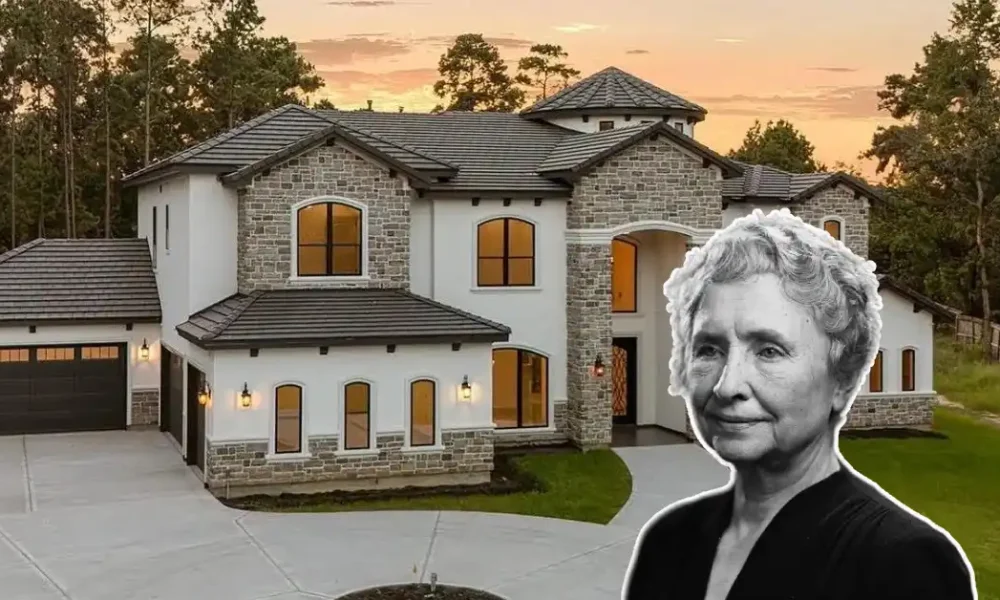Helen Keller House stands as one of America’s most inspiring historic landmarks, where a young girl’s world changed forever in 1887. Located in Tuscumbia, Alabama, this 1820 home witnessed the moment when Helen Keller first understood language through her teacher Anne Sullivan’s patient instruction at the famous water pump. The house, known as Ivy Green, now serves as a museum that attracts thousands of visitors yearly who come to learn about Keller’s remarkable journey from isolation to becoming a world-renowned author and advocate.
Much like other influential figures such as Mahalia Jackson, who used their platforms to advocate for social change, Helen’s home represents the birthplace of extraordinary activism. Built by Helen’s grandfather, David Keller, this Southern cottage has remained virtually unchanged since its construction, preserving the exact environment where one of history’s most extraordinary breakthroughs in human communication took place.
Who is Helen Keller?
Helen Keller transformed from a deaf-blind child into one of America’s most celebrated advocates and authors. Born in 1880 at Helen Keller House, she lost her sight and hearing at 19 months old due to an illness that doctors couldn’t identify. Her parents, Arthur and Kate Keller, struggled to communicate with their daughter until they contacted the Perkins School for the Blind, which sent Anne Sullivan to help. Sullivan’s arrival at the Helen Keller House in March 1887 marked the beginning of an incredible partnership that would last nearly 50 years.
Helen’s breakthrough came at age seven when Sullivan spelled “water” into her hand while pumping water at Ivy Green. This moment opened Helen’s world to language, and she quickly learned to read Braille, write, and even speak. She became the first deaf-blind person to earn a college degree, graduating from Radcliffe College in 1904. Helen wrote 14 books, including her famous autobiography “The Story of My Life,” and became a powerful advocate for people with disabilities, women’s rights, and social justice causes.
Helen Keller House & Location
The Helen Keller House sits on a beautiful 10-acre estate at 300 West North Commons in Tuscumbia, Alabama. This location in the Tennessee Valley region provided the perfect setting for Helen’s childhood, with its mild climate and rural surroundings. Tuscumbia, a small town in northwest Alabama, was Helen’s birthplace and remained her family’s home base throughout her life.
David Keller, Helen’s grandfather, chose this spot to build the family home in 1820. The property features rolling grounds covered with ivy, which gave the estate its name “Ivy Green.” The house itself showcases classic Southern architecture with Virginia cottage influences, reflecting the building styles popular in the early 19th century. The estate survived the Civil War intact, making it one of the few antebellum homes in the area to remain in its original condition. Today, the Helen Keller House operates as a museum managed by the Helen Keller Birthplace Foundation, which works to preserve the site’s historical integrity while making it accessible to visitors from around the world.
Features of Helen Keller House
The Helen Keller House offers visitors several remarkable features that tell Helen’s story:
- The Famous Water Pump: The most significant feature where Helen learned her first word, “water,r” with Anne Sullivan
- Original Family Furnishings: Period pieces that belonged to the Keller family during Helen’s childhood
- Helen’s Birth Room: The exact room where Helen was born on June 27, 1880
- Anne Sullivan’s Cottage: A separate building where Helen’s teacher lived during her time at Ivy Green
- Museum Exhibits: Displays featuring Helen’s personal belongings, books, awards, and correspondence
- Gift Shop: Offering books about Helen’s life and educational materials about deaf-blind communication
- Performance Space: Outdoor area where “The Miracle Worker” play is performed annually during the Helen Keller Festival
House Design and Style
The Helen Keller House represents excellent examples of 1820s Southern domestic architecture. David Keller designed the home as a Virginia cottage, a style popular among well-to-do Southern families of the early 1800s. The house features white clapboard siding with green shutters, creating the classic antebellum appearance that visitors expect from historic Southern homes.
The structure includes a raised foundation that helps protect against flooding and provides better air circulation in Alabama’s humid climate. Wide front porches with columns offer shade and outdoor living space, typical of Southern homes built for comfort in warm weather. The roof design includes dormers that provide natural light to the upstairs rooms while maintaining the cottage’s proportional appearance. Each room features high ceilings that help with air circulation, and the multiple fireplaces provide heating during Alabama’s mild winters. The Helen Keller House has maintained its original architectural integrity, with restoration work focusing on preserving rather than modernizing the structure.
Personal House Touches
Helen’s family filled the Helen Keller House with personal touches that reflected their lifestyle and values, creating a warm environment that nurtured her development much like how Dolly Parton has created spaces that reflect her values and commitment to education and helping others.
The Keller family displayed their book collection prominently throughout the house, showing their commitment to education and learning. Helen’s father, Arthur, worked as a newspaper editor, so the house contained writing materials and newspapers that reflected the family’s literary interests. Kate Keller, Helen’s mother, decorated the home with handmade quilts and furniture that showcased Southern domestic traditions.
Helen’s Items Include:
- Her Braille books and writing equipment
- Personal correspondence with famous figures like Mark Twain and Alexander Graham Bell
- Awards and honors she received throughout her career
- Photographs documenting her travels and achievements
- Her graduation cap and gown from Radcliffe College
The Helen Keller House also preserves items belonging to Anne Sullivan, including her teaching materials and personal belongings. These artifacts help visitors understand the close relationship between Helen and her teacher, who lived together for nearly five decades.
Interior Design & Highlights
The Helen Keller House interior maintains its 1820s appearance with period-appropriate furnishings and decorations. The main floor features four large rooms, each with its fireplace for heating. The parlor showcases Victorian-era furniture where the family entertained guests and where Helen first met Anne Sullivan. The dining room contains the original family table where Helen learned proper eating etiquette and social skills.
Helen’s bedroom remains furnished as it was during her childhood, complete with her bed, dresser, and personal items. The room’s windows face the garden, providing natural light that helps Helen navigate her familiar surroundings. Anne Sullivan’s room in the main house shows where the teacher stayed before moving to the separate cottage on the grounds. The upstairs rooms, connected by a central hallway, housed family members and guests who visited the Helen Keller House.
The museum has preserved original wallpaper patterns and paint colors where possible, giving visitors an authentic experience of 19th-century home life. Display cases throughout the house contain Helen’s books, both those she read and those she wrote, along with her awards and recognition from organizations worldwide.
Outdoor House Spaces
The grounds surrounding the Helen Keller House played a crucial role in Helen’s development and education. The 10-acre estate provided a safe space for Helen to explore and learn about her environment through touch and smell. The famous water pump stands in its original location, marked with a plaque commemorating the moment when Helen understood language.
Gardens around the house feature plants that Helen would have known, including roses, honeysuckle, and other fragrant flowers that helped her navigate the outdoor spaces. The ivy that covers much of the property gives Ivy Green its name and creates the lush, Southern atmosphere that visitors enjoy today. Walking paths connect different areas of the property, allowing visitors to follow Helen’s childhood routes between the main house, cottage, and outbuildings.
Anne Sullivan’s cottage sits near the main house, providing insight into the living arrangements that allowed for Helen’s intensive education. The cottage contains period furnishings and Sullivan’s items, helping visitors understand the dedication required for Helen’s breakthrough. The Helen Keller House grounds also include space for the annual Helen Keller Festival, where performers present “The Miracle Worker” in an outdoor amphitheater setting.
Market Value and Comparisons
The Helen Keller House doesn’t have a conventional market value because it operates as a museum and National Historic Landmark rather than a private residence. Since 1954, the Helen Keller Birthplace Foundation has owned and operated the property, ensuring its preservation for educational purposes. The foundation receives funding through admission fees, donations, grants, and special events rather than traditional real estate transactions.
Pricing and Operational Information:
| Category | Details |
|---|---|
| Admission Cost | Adults: $10-15, Children: $5-8 |
| Annual Visitors | Approximately 50,000-75,000 |
| Operating Budget | $200,000-300,000 annually |
| Foundation Value | Estimated $2-3 million in assets |
| Maintenance Costs | $50,000-75,000 yearly |
Compared to other historic house museums, the Helen Keller House attracts significant visitor numbers due to Helen’s international recognition. Similar disability history sites don’t exist in large numbers, making Ivy Green unique in its educational mission. The property’s value lies in its cultural and educational impact rather than real estate appreciation.
Other Houses Owned by Helen Keller
Helen Keller lived in various locations throughout her life, but the Helen Keller House remained her primary family home and the property most associated with her legacy. After leaving Alabama for education, Helen and Anne Sullivan lived in several places:
- Cambridge, Massachusetts: While Helen attended Radcliffe College
- Wrentham, Massachusetts: A house they shared with Sullivan’s husband, John Macy
- Forest Hills, New York: Their final long-term residence, where Helen lived until her death
Helen always considered the Helen Keller House her true home, returning frequently throughout her life for family visits and later for museum events. None of her other residences have been preserved as museums, making Ivy Green the sole historic house that tells Helen’s complete story.
Conclusion
The Helen Keller House stands as more than just a historic building—it represents the power of human determination and the importance of education. Visitors leave Ivy Green with a deeper understanding of Helen’s achievements and the breakthrough that changed disability education forever. Like other remarkable figures such as Colin Powell, who overcame obstacles to achieve greatness, Helen’s story continues to inspire people worldwide. The house continues serving its educational mission, inspiring new generations to overcome challenges and advocate for others. Helen’s legacy lives on through this carefully preserved home, where her remarkable journey from isolation to international recognition began at that simple water pump in Tuscumbia, Alabama.




No Comment! Be the first one.